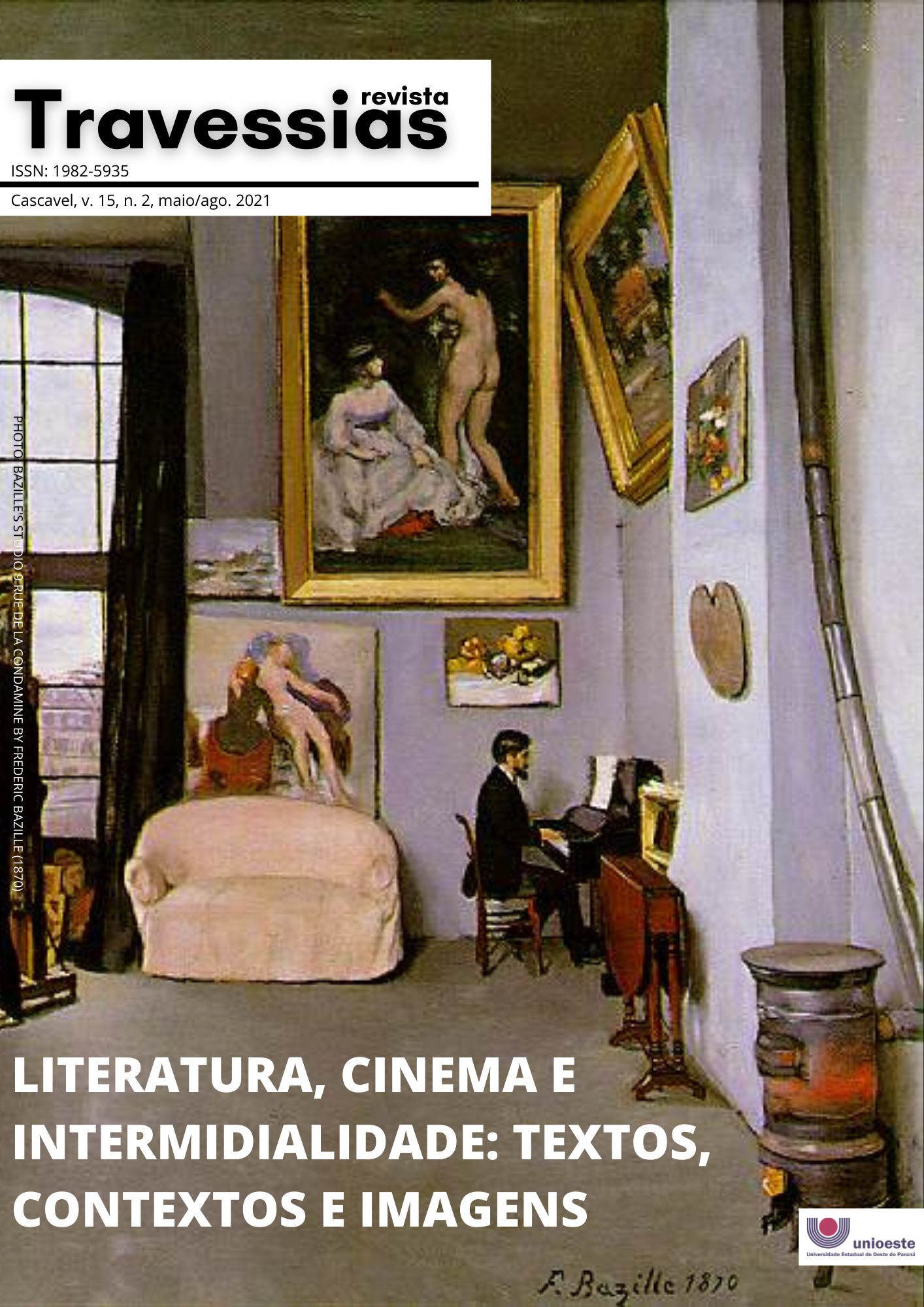A representação feminina e as relações intersemióticas em Objetos Cortantes e Garota Exemplar
DOI:
https://doi.org/10.48075/rt.v15i2.27767Palavras-chave:
Objetos cortantes, Garota exemplar, Gillian Flynn, Representação feminina.Resumo
Este trabalho faz parte de uma pesquisa de iniciação científica , cujo objetivo é analisar a representação feminina na literatura, na televisão e no cinema, tendo como corpus as versões literárias de Objetos Cortantes (2006) e de Garota Exemplar (2013), ambas da autora Gillian Flynn, e suas versões sincréticas homônimas, que têm como organizadores respectivamente Jean Mark Vallée (2018) e David Fincher (2014). Percebe-se que todas as obras de Flynn, tanto nas versões literárias quanto nas sincréticas homônimas, há predominância de figuras femininas marcantes, como podemos perceber pela protagonista de Objetos Cortantes (2006), Camille Preaker, e de Garota Exemplar (2013), Ammy. Nessas obras, podemos observar que as personagens principais possuem pontos comuns, sendo que o principal é que ambas fogem aos constructos sociais e patriarcais da sociedade, mesmo que de formas diferentes. Diante disto, o nosso trabalho foi construído a partir da seguinte questão de pesquisa: Como se dão as relações intersemióticas nas obras de Objetos Cortantes (2006) e Garota Exemplar (2013) levando em conta a presença da figura feminina? Deste modo, objetivamos compreender como se configura a representação feminina nestas adaptações televisiva e fílmica das obras literárias. Este trabalho foi realizado a partir de uma metodologia bibliográfica, utilizando um aporte teórico que engloba Hutcheon (2011) e Martin (2006), os quais trazem considerações sobre relações intersemióticas e motivações econômicas para a construção de uma adaptação. Além disso, também utilizamos a obra organizada por Pinsky e Pedro (2012), que versa sobre a construção social e os papéis atribuídos à mulher através dos tempos.
Downloads
Referências
BALOGH, Ana Maria. O discurso ficcional na TV. São Paulo: EDUSP, 2002.
DALCASTAGNÈ, R. A personagem do romance brasileiro contemporâneo: 1990-2004. Estudos De Literatura Brasileira Contemporânea, v. 26, p. 13-71.
FLYNN, Gillian. Garota Exemplar. Rio de Janeiro: Intrínseca, 2013.
FLYNN, Gillian. Objetos Cortantes. Rio de Janeiro: Intrínseca, 2015.
HUTCHEON, Linda. Uma teoria da adaptação. Tradução: André Cechinel. Florianópolis: Ed. Da UFSC, 2011.
PINSK, Carla Bassanezi; PEDRO, Joana.Maria (org.). Nova história das mulheres no Brasil. São Paulo: Contexto, 2012.
SCHWANTES, Cíntia. Dilemas da representação feminina. OPSIS, Catalão, v. 6, p. 07-19, 2006. Disponível em: http://www.catalao.ufg.br/historia/revistaopsis/sumarios/OPSIS2006/OPSIS2006_01_0.PDF. Acesso em: 22 fev. 2021.
SCOTT, Ana Sílvia. O caleidoscópio dos arranjos familiares. In: PINSK, Carla Bassanezi; PEDRO, Joana Maria (org.). Nova História das Mulheres no Brasil. São Paulo: Editora Contexto, 2012. p. 15-42.
ZOLIN, Lúcia Osana. Questões de gênero e representação na contemporaneidade. Revista de Letras, n. 41, p. 183-195, jul./dez. 2010.
Downloads
Publicado
Como Citar
Edição
Seção
Licença
Aviso de Direito Autoral Creative Commons
Política para Periódicos de Acesso Livre
Autores que publicam nesta revista concordam com os seguintes termos:
1. Autores mantêm os direitos autorais e concedem à revista o direito de primeira publicação, com o trabalho simultaneamente licenciado sob a Licença Creative Commons Attribution que permite o compartilhamento do trabalho com reconhecimento da autoria e publicação inicial nesta revista.
2. Autores têm autorização para assumir contratos adicionais separadamente, para distribuição não-exclusiva da versão do trabalho publicada nesta revista (ex.: publicar em repositório institucional ou como capítulo de livro), com reconhecimento de autoria e publicação inicial nesta revista.
3. Autores têm permissão e são estimulados a publicar e distribuir seu trabalho online (ex.: em repositórios institucionais ou na sua página pessoal) a qualquer ponto antes ou durante o processo editorial, já que isso pode gerar alterações produtivas, bem como aumentar o impacto e a citação do trabalho publicado (Veja O Efeito do Acesso Livre).
Licença Creative Commons
Esta obra está licenciada com uma Licença Creative Commons Atribuição-NãoComercial-CompartilhaIgual 4.0 Internacional, o que permite compartilhar, copiar, distribuir, exibir, reproduzir, a totalidade ou partes desde que não tenha objetivo comercial e sejam citados os autores e a fonte.



